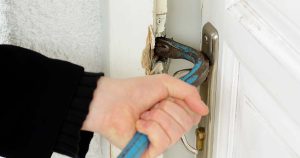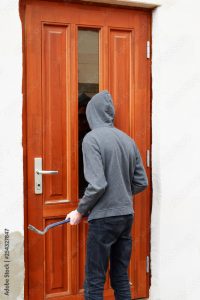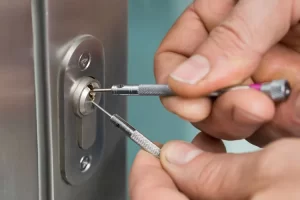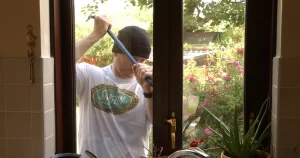 In today’s modern world, where cunning burglars are growing more intelligent and the vast realm of information on the internet is easily accessible, the importance of physical barrier security has become paramount in both homes and workplaces. Gone are the days when a simple lock on the door was enough to deter intruders. Now, with just a quick Google search on “how to pick a lock,” you’ll be astounded by the overwhelming number of results – a staggering 953,000,000, to be precise. It’s a clear indication that burglars have upped their game.
In today’s modern world, where cunning burglars are growing more intelligent and the vast realm of information on the internet is easily accessible, the importance of physical barrier security has become paramount in both homes and workplaces. Gone are the days when a simple lock on the door was enough to deter intruders. Now, with just a quick Google search on “how to pick a lock,” you’ll be astounded by the overwhelming number of results – a staggering 953,000,000, to be precise. It’s a clear indication that burglars have upped their game.
Contrary to what we often see portrayed in movies and TV shows, most burglaries occur during the daytime, between the hours of 10 AM and 3 PM. It’s a strategic window of opportunity when children are at school and adults are busy at work. Burglars prefer to strike when homes are unoccupied, and the daytime hours provide a perfect cover, as the neighborhood is typically devoid of curious onlookers engrossed in their own errands and jobs.
 Moreover, it’s important to dispel the notion that burglars are masterminds orchestrating elaborate heists with a team of seasoned criminals. Although we may enjoy action-packed films, the reality is far less glamorous. In truth, the majority of home break-ins are crimes of opportunity. Most burglars don’t go to extreme lengths to infiltrate your home; instead, they target easily exploitable entry points that are least likely to attract attention.
Moreover, it’s important to dispel the notion that burglars are masterminds orchestrating elaborate heists with a team of seasoned criminals. Although we may enjoy action-packed films, the reality is far less glamorous. In truth, the majority of home break-ins are crimes of opportunity. Most burglars don’t go to extreme lengths to infiltrate your home; instead, they target easily exploitable entry points that are least likely to attract attention.
Let’s take a closer look at the most common points of entry for home break-ins:
- Front door: Surprisingly, 34% of burglars simply twist the doorknob and stroll right in.
- First-floor windows: Approximately 23% exploit open windows on the ground floor to gain access.
- Back door: About 22% enter through the rear entrance of a property.
- Garage doors: Around 9% take advantage of vulnerable garage doors.
- Basement: Roughly 4% choose the basement as their point of entry.
- Unlocked areas, sheds, and storage: Another 6% will attempt any opening that isn’t securely locked.
- Second-floor window: A daring 2% will even go for the challenge of accessing a second-story window.
By fortifying these vulnerable areas, you can significantly reduce the likelihood of a home break-in.
 Now, let’s delve into the tools of the trade used by burglars. Have you ever wondered what they carry in their illicit toolkit? Knowing their methods can help you better protect your home.
Now, let’s delve into the tools of the trade used by burglars. Have you ever wondered what they carry in their illicit toolkit? Knowing their methods can help you better protect your home.
-
Unlocked doors: While not exactly a physical tool, an unlocked door is a burglar’s best friend. Frequently, burglars test doors to see if they give way without any additional effort. Many break-ins occur simply because the deadbolt lock was left disengaged (a smart lock could assist in combatting forgetfulness).
-
Disguises: This may sound like a playful concept reminiscent of Halloween or childhood dress-up, but when used by burglars, disguises take on a more sinister tone. By assuming different personas, such as a salesman or delivery person, burglars find it easier to approach homes without arousing suspicion.
-
Pry bar: Crowbars are invaluable tools for home break-ins. They can be easily concealed beneath clothing and swiftly employed to pry open doors or smash windows, making them a staple in a burglar’s toolkit.
-
Ladders or discarded tools on the property: Construction work or handyman services are common sights in residential areas. Burglars may opportunistically utilize ladders or tools left behind, adopting the guise of a worker to gain entry.
-
Dog Treats: Surprisingly, a survey of 86 burglars revealed that home invaders generally dislike encountering dogs. To dampen the barking of vigilant pups, resourceful burglars may carry dog treats to pacify them in a pinch.
Now, let’s explore the homes that burglars target. By understanding their preferences, you can take proactive measures to avoid falling victim to a break-in.
Burglars tend to seek out signs of emptiness when scouting homes. Residents unknowingly leave clues that catch their attention. For example, burglars take note of:
-
Trash cans left outside: This signals an unoccupied home on an otherwise tidy street. If you plan to be away during trash pickup, consider asking a trusted neighbor to bring in your bins.
-
Accumulated mail: When people embark on vacations, mail tends to pile up quickly, drawing burglars’ attention. To avoid this, either request a mail hold or have a neighbor collect your mail daily.
-
Unclaimed packages: Lonely packages left unattended on porches are red flags for potential burglars, indicating that no one is home. (Be cautious, as this situation also makes you vulnerable to package theft. Avoid ordering items until you’re certain you’ll be present to receive them.)
-
Neglected lawns and overgrown shrubbery: High grass can indicate an unoccupied home, as it suggests no one is there to maintain the property. Consider hiring a lawn service or enlisting the help of a neighborhood teenager to mow your lawn while you’re away.
-
Dilapidated fences and homes in disrepair: Houses that exhibit signs of neglect are prime targets for burglars. These properties imply either an unoccupied dwelling or overall lax security, making them attractive prospects for break-ins.
-
Social media posts: While we all love sharing our vacation snapshots, modern burglars are savvy enough to scour social media platforms. They can determine when you’re away from home, making it prudent to hold off on sharing your travel experiences until after you return.
-
Homes lacking security features: Did you know that homes without security systems are three times more likely to be targeted by burglars? Many thieves scout for alarm systems and steer clear if they detect these deterrents.
 Additionally, certain types of homes face a higher risk of break-ins. If your residence falls into any of the following categories, it’s wise to take extra precautions:
Additionally, certain types of homes face a higher risk of break-ins. If your residence falls into any of the following categories, it’s wise to take extra precautions:
-
Homes located in areas with low visibility: Whether concealed by dense foliage or positioned in poorly lit surroundings, homes with reduced visibility are enticing to burglars who seek to avoid detection. A report by KGW8 suggests that homeowners improve visibility by ensuring good lighting, trimming bushes and trees, and fostering a sense of community with vigilant neighbors who can report any suspicious activity to the police.
-
Houses situated in the middle of the street or in cul-de-sacs: According to Reader’s Digest, homes located in the center of a street or within a cul-de-sac, particularly those positioned in front of a forested area, provide burglars with an easier escape route.
-
Residences near alleyways: Homes in close proximity to alleyways are attractive to burglars due to the ease of a swift getaway through the narrow streets.
-
Detached houses: Homes with detached garages present enticing opportunities for burglars. Such properties offer easy access and often come with the added advantage of a quiet alley for a swift exit.
If your home aligns with any of these characteristics, it’s crucial to implement additional measures to safeguard against break-ins.
So, how can you protect yourself from potential break-ins? One highly effective method is to invest in physical barrier security. Scorpion Security doors, for instance, offer “extremely secure” door options equipped with multiple steel layers and fail-safe locks. Don’t wait until it’s too late to take action. Invest in physical barrier security today to prevent becoming a victim of burglary.
